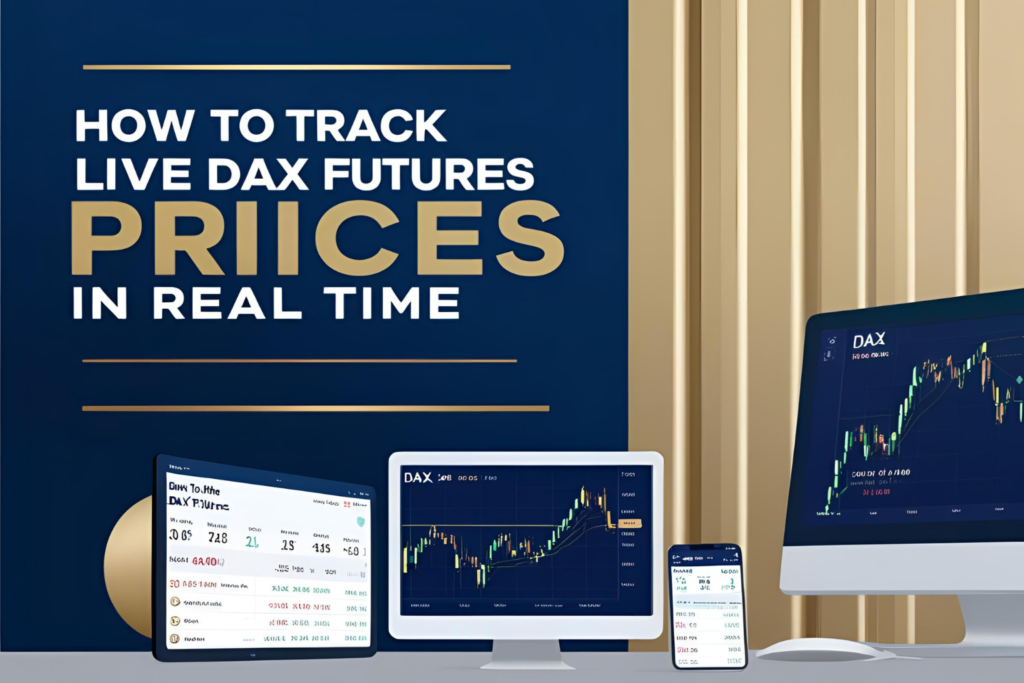If you’re trading global index futures, you’ve likely come across DAX, Dow Jones, and FTSE contracts. While they all represent major economies, their futures contracts behave differently—and knowing how they compare can help you choose the right market for your trading strategy.
This post breaks down the key differences between DAX futures vs Dow Jones and FTSE in terms of volatility, contract specs, session hours, and market behavior.
1. Index Composition
| Index | Region | Description |
|---|---|---|
| DAX (Germany) | Eurozone | Top 40 blue-chip German companies (SAP, BMW, Siemens) |
| Dow Jones (USA) | U.S. | 30 major U.S. companies (Apple, Goldman Sachs, Boeing) |
| FTSE 100 (UK) | UK | Top 100 companies on the London Stock Exchange |
2. Contract Specifications
| Feature | DAX (FDAX) | Dow (YM/MYM) | FTSE (Z) |
|---|---|---|---|
| Exchange | Eurex (FDAX/FDXM) / CME (Micro) | CME | ICE Futures Europe |
| Point Value | €25 (FDAX), €5 (FDXM) | $5 (YM), $0.50 (MYM) | £10 (standard), £1 (mini) |
| Tick Size | 0.5 (FDAX), 1 (CME Micro) | 1 | 0.5 |
| Tick Value | €12.50 (FDAX), €5 (CME) | $5 (YM), $0.50 (MYM) | £5 or £0.50 |
| Margin (approx.) | €25K FDAX / €2K Micro | $12K (YM) / $1.2K (MYM) | Varies by broker |
3. Volatility & Behavior
| Index | Typical Volatility | Ideal For |
|---|---|---|
| DAX | High volatility, strong trends | Day & swing trading |
| Dow Jones | Moderate volatility, smooth trends | Intraday or short swings |
| FTSE | Lower volatility, slow movement | Range-bound strategies, hedging |
✅ DAX is more volatile, with sharper moves
✅ Dow offers smoother intraday moves
✅ FTSE is more stable, often trades in tight ranges
4. Trading Hours
| Market | Trading Hours (local time) |
|---|---|
| DAX (Eurex) | 01:10 – 22:00 CET (Eurex), 23 hrs/day on CME Globex |
| Dow (YM) | 23 hrs/day on CME Globex (5 PM–4 PM CT) |
| FTSE | 01:00 – 21:00 UK Time (ICE Exchange) |
DAX and Dow are almost 24-hour markets, while FTSE has more limited hours.
5. Economic Drivers
- DAX: German/Eurozone GDP, ECB policy, export data, automotive sector
- Dow: U.S. interest rates, earnings reports, tech sector moves, Fed policy
- FTSE: Brexit developments, Bank of England policy, commodity sector (oil, mining)
Each index responds differently to global news. DAX often reacts more aggressively to EU data than Dow or FTSE.
6. Best Use Cases
| Trader Type | Recommended Index |
|---|---|
| Scalper | Dow or DAX (lower spread, tighter structure) |
| Swing Trader | DAX or FTSE |
| Beginner | FTSE (less aggressive) or Dow Micro |
| Global Macro Trader | DAX for Eurozone, Dow for U.S., FTSE for UK hedging |
Final Thoughts
While DAX, Dow Jones, and FTSE futures all offer global exposure, each behaves differently due to region, structure, and volatility. DAX is ideal for traders who thrive on sharp intraday movements, while the Dow is a staple for steady U.S. market trades. FTSE is slower but valuable for diversification or lower-risk setups.
Understanding the differences between DAX, Dow, and FTSE futures allows you to tailor your trading approach and manage risk more effectively.
FAQs
1. Which is more volatile: DAX or Dow?
DAX is typically more volatile and can move faster in response to Eurozone data.
2. Can I trade all three on one platform?
Yes, platforms like Interactive Brokers, NinjaTrader, or TradingView support all three.
3. Are all three cash-settled?
Yes, DAX, Dow, and FTSE futures are typically cash-settled.
4. Which has the lowest margin requirements?
The CME Micro Dow (MYM) and CME Micro DAX have the lowest entry barriers.
5. Can I trade FTSE futures in the U.S.?
Yes, through brokers that offer access to ICE Futures Europe.

